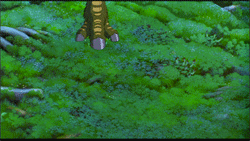
Written by Amanda Rodriguez
Spoiler Alert
Hayao Miyazaki is one of the most renowned animators alive. He brought us visually arresting, pro-woman, environmentalist tales like Princess Mononoke and Nausicaä of the Valley of the Wind. He brought us lush tales of magic and mythology, like Spirited Away and Howl’s Moving Castle, with young women as protagonists and other women as focal, powerful characters throughout. Miyazaki now insists that his latest animated film, The Wind Rises (Kaze Tachinu), will be his last.
The film felt like a goodbye with its insistence that artists can only be creative and productive for 10 years, its somber outlook, and the way in which it concluded at the end of a major era in Japanese history (Japan’s defeat in World War II). The Wind Rises also features one of Miyazaki’s rare male protagonists, Jirô Horikoshi (a fictionalized version of the eponymous historical aeronautical engineer who designed Japan’s model “Zero” fighter plane); I suspect this is because Miyazaki identifies with Jirô and his dreams that are too big and too pure for this world.

Considering Miyazaki’s focus on the centrality of female characters throughout his career, The Wind Rises is disappointing in its lack of developed female characters. There’s really only Jirô’s loud and pushy but soft-hearted little sister, Kayo, who grows up to be a doctor. Jirô’s encouragement of her medical school dreams and the achievement of a peripheral female character’s big dreams in the 1940’s are a bit too subtle to consider feminist, but it’s a welcome nod nonetheless. Nahoko is Jirô’s tragic love interest who has loved him completely and selflessly since he rescued her as a girl from the Great Kantō Earthquake of 1923. Though we know Nahoko loves painting, French poetry, and Jirô, there is little else that we know about her beyond that. She exists solely to love and support Jirô and to humanize him in a way that none of his other relationships do.

Though The Wind Rises is (as to be expected) beautiful, it is overly sentimental. Jirô’s reunion with a woman who he helped many years ago only to fall in love with her only to have her be tragically ill was a bit too neat of an unrealistic package designed to give magic and wonder to the external life of a young man who mainly lived within his own head. Not only that, but the ethereal quality of dreams is the heart of the film, insisting that we must make our beautiful dreams a reality no matter what the consequences, no matter how the world may pervert those dreams. This is particularly true of Jirô’s innocent desire to design planes that is warped and manipulated to serve his country’s wartime needs. As a member of the country who heinously dropped two atomic bombs on Japan during World War II, I find this particular theme questionable. Though I valued a glimpse of history from Japan’s perspective, which the US rarely sees, I would have been extremely uncomfortable had I been watching a tale about the creation of the atom bomb and how it was a beautiful dream that life distorted, a dream with deadly real life applications for which the dreamer takes little responsibility. We only know that Jiro and his dreamland mentor, the Italian Caproni, would prefer to design planes that weren’t used for war, but they do so anyway and without question.

This leads me to my final critique of the film. The war and the purpose of the planes that Jirô builds are, strangely, non-issues. The Wind Rises is an oddly apolitical nationalistic film that laments Japan’s poverty, inability to innovate due to economic challenges, and the pain of pride for being a country technologically left behind. The motivations for the war are never discussed. No one is pro-war or anti-war. The film seems to be asserting that Japan’s involvement in World War II was due to a sense of honor rather than conviction or even political profit. Japan, like Jirô, is, instead a little country with a big dream. Miyazaki’s blasé approach to the war does not measure up to the clear-cut environmentalist stance he takes in many of his other films.

While Miyazaki continues to deliver breathtaking animated scenes and a sense of wonder and magic, The Wind Rises disappoints on a thematic level with its lack of engagement or curiosity about Japan’s involvement in World War II or an artist’s responsibility for their creations. The borderline cloying saccharine sentimentality along with the lack of strong female characters we’ve come to expect from Miyazaki leave me hoping The Wind Rises is not his swan song, that he will make just one more film that rivals, if not surpasses, the masterpieces he has already given us.
Read also Howl’s Moving Castle and Male Adaptations of Female Work, Princess Mononoke Has No Desire to Marry A Prince, Miyazaki Month: Nausicaä of the Valley of the Wind, Miyazaki Month: Howl’s Moving Castle, Miyazaki Month: Spirited Away, Miyazaki Month: Princess Mononoke, Animated Children’s Films: Spirited Away














